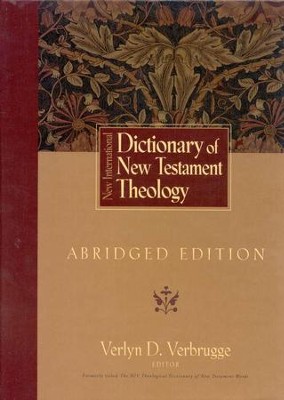In a recent post on biblical concordances, I explained how a concordance is used as a means of studying Scripture. By using a concordance’s index and finding the original-language word that the English has been translated from, a Bible-reader can come to understand the text in a deeper way than by simply reading the Bible in English.

In order to link the original-language word to the
corresponding English word, concordances use a numbering system that grants
users significant insight into the translation process and clues to the
original meaning.
For example, in ancient Greek, more than one word translates to ‘love’ in English. Agapaō, phileō, storgē—each of these Greek words (in addition to compounds) have different connotations that might affect how we understand certain passages.
Official numbering systems, like Strong’s and Goodrick/Kohlenberger (G/K), assign a separate number to each different original-language word so that a concordance-user doesn’t have to know Greek (or Hebrew and Aramaic) to be aware of these differences, and he or she can use them to look words up separately.
What’s the difference between these two popular numbering systems?
The Strong’s numbering system is probably the most widely known. Constructed under the direction of James Strong in the late 1800s, the main concordance was an index of every word that appeared in the King James Version of the Bible with the original-language entry number given beside the English word.

In the late 1970s, John R. Kohlenberger III and his mentor, Edward W. Goodrick, developed a new numbering system—created with the New International Version in mind. Using emerging technologies and software, the two experts were capable of developing concordances that were more exhaustive and accurate than most of their predecessors.
The numbering system that came from their work (typically referred to as the G/K numbers) are considered more up-to-date than Strong’s (though Strong’s has also been updated). Both are still commonly used today, sometimes in tandem or for the sake of comparison.
If you’re interested in exploring ways in which you can delve into original-language nuances on Bible Gateway, the Mounce Reverse-Interlinear New Testament translation is a free Greek resource on Bible Gateway, and it is a powerful tool. When reading the Bible with this translation, each Greek word is a link that opens a side bar indexing that word and defining it. You’ll also see both the Strong’s and the G/K numbers for each entry to use as a quick word-study reference.
If you play around with this and it seems like fun…that’s because it is! If you’re new to word studies or any language-oriented Bible investigation — something we at Bible Gateway highly recommend — we’ve also just scratched the surface.
To learn more about how to conduct your own word studies of the Bible, check out our video series, Bible Word Study Made Easy: A Conversation with Dr. Bill Mounce.
Become a member of Bible Gateway Plus. Try it right now!
The post A Brief Guide to Biblical Concordances, Pt. 2 appeared first on Bible Gateway Blog.













